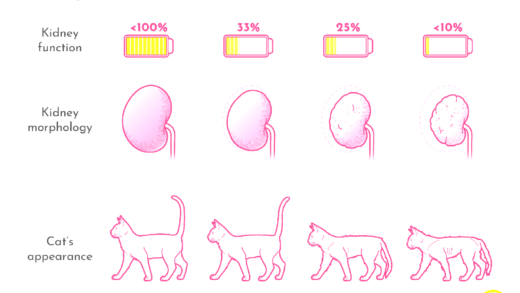The Tropic of Capricorn is a crucial geographical marker that significantly affects climate, agriculture, and daily life in the southern hemisphere. Its influence extends to weather patterns, farming practices, and cultural events, shaping the experiences of those living nearby. Understanding its role is vital for adapting to environmental changes and appreciating its impact on local ecosystems.
What is the Tropic of Capricorn?
The Tropic of Capricorn is a significant geographical line located at approximately 23.5° South of the equator. It marks the southernmost point where the sun can be directly overhead at noon. This phenomenon occurs during the December solstice, making it an essential reference point in geography.
Geographically, the Tropic of Capricorn passes through several countries, including:
- Chile
- Argentina
- Paraguay
- Brazil
- Namibia
- South Africa
- Australia
This line is crucial for understanding various climatic zones and ecosystems around the world. Knowing where the Tropic of Capricorn is helps to grasp the complexities of solar energy distribution and its effects on weather patterns.
Why is the Tropic of Capricorn Important?
The significance of the Tropic of Capricorn extends beyond its geographical location. It serves as a vital marker for climatology, agriculture, and navigation. Geographically, it defines the boundary between the temperate and tropical zones. This distinction influences weather patterns, biodiversity, and agricultural practices.
For instance, areas south of this tropic experience distinct seasonal changes compared to regions closer to the equator. Understanding its significance is vital for:
- Climate studies: The Tropic of Capricorn helps predict weather variations and climate change impacts.
- Agricultural planning: Farmers use this line to determine crop suitability based on climate conditions.
- Navigation: Historically, sailors and explorers used it as a reference for mapping the southern hemisphere.
Overall, its geographical relevance impacts daily life, from farming to climate awareness.
How Does the Tropic of Capricorn Affect Climate?
The Tropic of Capricorn plays a crucial role in determining climate variations across the southern hemisphere. Its position affects how sunlight reaches different regions, influencing temperature and precipitation patterns.
Key climate effects include:
- Temperature Regulation: Regions near the Tropic of Capricorn generally experience warmer temperatures due to more direct sunlight.
- Seasonal Changes: Areas south of this line have marked seasons, with summer occurring when the sun is overhead at the tropic.
- Weather Patterns: The tropic influences trade winds and ocean currents, affecting rainfall distribution.
For example, countries like Australia and South Africa experience distinct climates that are shaped by their proximity to the Tropic of Capricorn. Understanding these effects is crucial for predicting weather-related events and planning agricultural activities.
Tropic of Capricorn vs. Tropic of Cancer
The Tropic of Capricorn and the Tropic of Cancer are both important lines of latitude, but they serve different purposes and exist in different hemispheres. The Tropic of Capricorn is located at approximately 23.5° South, while the Tropic of Cancer is at about 23.5° North. This positioning means that each tropic experiences unique solar phenomena.
Key differences include:
- Solar Position: The sun is directly overhead at the Tropic of Capricorn during the December solstice, whereas it is directly overhead at the Tropic of Cancer during the June solstice.
- Climate Impact: Regions near the Tropic of Capricorn generally have warmer climates with more pronounced dry seasons compared to areas near the Tropic of Cancer, which often experience more rainfall.
- Cultural Significance: The Tropic of Cancer has historical importance for many northern cultures, while the Tropic of Capricorn holds significance for countries in the southern hemisphere, especially in agriculture and ecology.
Understanding these differences helps in grasping how latitude influences weather, seasons, and even cultural practices in different regions of the world.
Shifting Position of the Tropic of Capricorn
The Tropic of Capricorn is not a fixed line; it shifts over time due to the axial tilt of the Earth and other astronomical factors. This phenomenon is known as axial precession, which causes the position of the tropics to change slowly over millennia.
Factors influencing its movement include:
- Axial Tilt: The Earth’s tilt varies slightly over time, affecting the position of the tropics.
- Climate Change: Long-term climate trends can also influence the ecosystems around the tropics, leading to shifts in agricultural practices.
- Geological Changes: Tectonic activities can lead to changes in landforms that may indirectly affect the climate and ecosystems associated with the tropics.
The Tropic of Capricorn’s movement can have significant implications for agriculture and biodiversity, as farmers and ecologists must adapt to changing climatic conditions.
Fun Facts about the Tropic of Capricorn
The Tropic of Capricorn is full of intriguing facts that make it a fascinating geographical feature:
- Longest Day: The longest day of the year in the southern hemisphere occurs when the sun is directly overhead at the Tropic of Capricorn.
- Wildlife Diversity: The regions near the tropic are home to unique flora and fauna, including some species that thrive in arid climates.
- Historical Significance: Ancient civilizations used the tropic as a reference point for navigation and timekeeping.
These facts highlight the importance of the Tropic of Capricorn in both natural and human history, making it a vital part of our understanding of geography.
Influence on Agriculture and Ecosystems
The Tropic of Capricorn significantly influences agriculture and ecosystems in the regions it traverses. Its position affects climate conditions, which in turn shapes farming practices and biodiversity. Farmers in areas near the tropic adapt their crops and cultivation methods based on the climate patterns influenced by this geographical marker.
Key impacts include:
- Crop Selection: Farmers choose drought-resistant crops in arid regions near the tropic, such as South Africa, where rainfall can be sparse.
- Seasonal Planting: The distinct seasons marked by the Tropic of Capricorn dictate planting and harvesting times, essential for successful yields.
- Biodiversity: Ecosystems near the tropic exhibit unique flora and fauna, contributing to rich biodiversity that is crucial for ecological balance.
For instance, the unique climate in Australia, influenced by the Tropic of Capricorn, supports a variety of crops like grapes and wheat, which thrive under specific temperature and rainfall conditions. Understanding these influences is crucial for sustainable agricultural practices.
Daily Life and the Tropic of Capricorn
The Tropic of Capricorn plays a vital role in daily life, especially for communities living in its vicinity. Its impact on climate, agriculture, and cultural practices shapes the experiences of people in these regions.
Daily implications include:
- Weather Awareness: Residents must be aware of the seasonal changes dictated by the tropic to prepare for agricultural cycles and weather-related events.
- Cultural Events: Many local cultures celebrate solstices and equinoxes, events that are closely tied to the tropic’s position.
- Economic Activities: Regions near the Tropic of Capricorn often rely on tourism related to unique wildlife and natural phenomena, significantly influencing local economies.
For example, festivals celebrating the summer solstice in regions like Namibia highlight the cultural significance of the Tropic of Capricorn, fostering community spirit and tourism.
Personal Anecdotes and Stories
Growing up near the Tropic of Capricorn in Australia, I often marveled at the distinct seasonal changes. Each December, the sun would blaze overhead, signaling summer and the time for family barbecues and beach outings. The warmth was not just a weather pattern; it was a cultural experience that brought communities together.
One summer, I joined a local farmer who explained how the tropic influenced his crop choices. He spoke passionately about the drought-resistant varieties he cultivated, emphasizing how the climate shaped not just his livelihood but the entire community’s food supply. Stories like these illustrate the tangible effects of geographical features like the Tropic of Capricorn on daily lives, connecting us to the land and its rhythms.





Comments are closed.